So I was actually really pleasantly surprised by this week's main course, though I would certainly make some changes. Because it was actually too flavorful, if you can believe that.
 |
 |
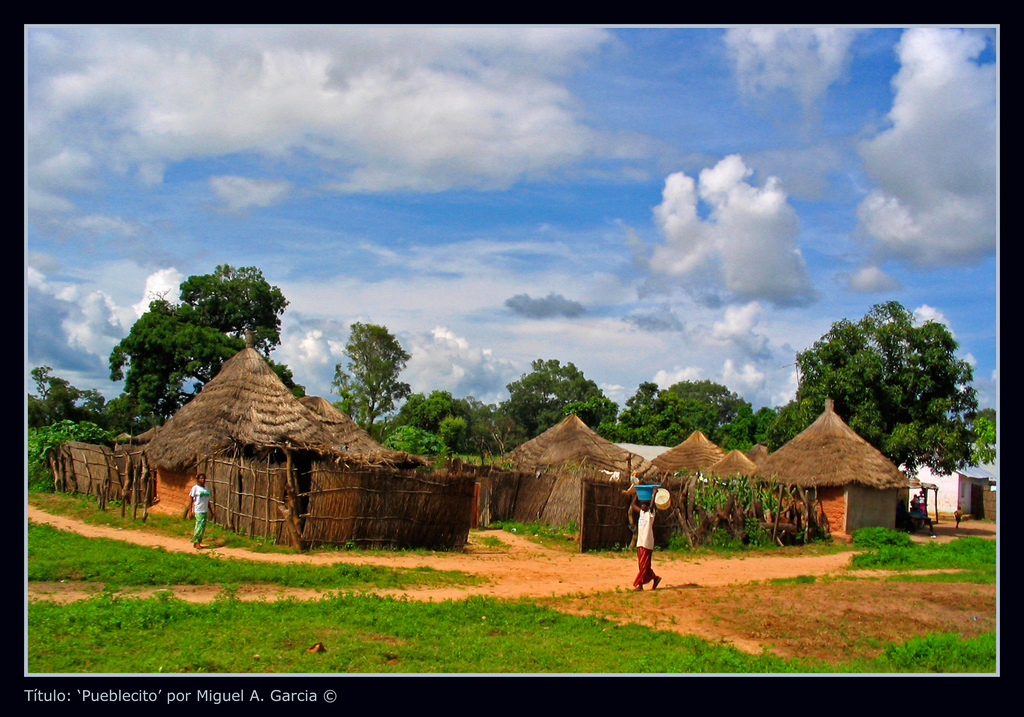 |
| North Bank, The Gambia. Photo Credit: Flickr User .Kikaytete.QNK |
Today, The Gambia has moved past all that and has a liberal, market-based economy. Most of its income comes from the export of peanuts, re-exports, and a healthy tourism industry. The tourism industry might at least partially explain why its food has so much flavor (demanding tourists with lots of cash), but of course that is just my totally ignorant, based on nothing but a hunch guess.
Anyway here are the two recipes I chose for this week's meal:
Chicken Yassa
(from the African Culture Portal)
- 8 to 10 boneless, skinless chicken breasts
- 2/3 cup oil
- 1 cup red wine vinegar
- 1 cup freshly-squeezed lime juice
- 6 chicken-bouillon cubes, crushed (I used Maggi cubes)
- 24 small garlic cloves, mashed
- 6 tsp fresh ginger, grated
- 2 tsp salt (or to taste)
- 12 tsp coarse black pepper
- 3-4 tsp red pepper (ground or flakes)
- 3 large onions, thinly sliced
Fish Jollof Rice
(from Access Gambia)
- 2 lbs fresh fish
- 2 cups vegetable oil
- 6 cups water
- 1 medium tomato
- 4 tbsp tomato paste
- 2 large onions
- 1 small cabbage
- 2 medium carrots
- 1 bay leaf
- Salt and pepper to taste
- 4 cups rice
The day before meal day, put the chicken breasts in a large bowl. In a separate bowl, combine the rest of the ingredients (except the onions) together.
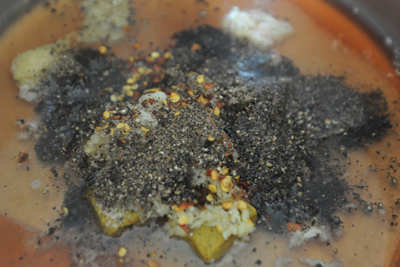 |
| Now that's a whole lotta spices. |
Broil the chicken in your oven, turning once. When you have a nice, brown color on both sides and an internal thermometer reads 165, remove the chicken (note: I baked mine first to about 145, then I finished it under the broiler).
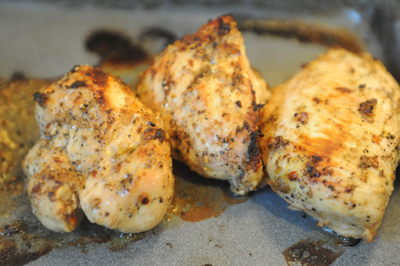 |
Saute the onions in a small amount of oil until golden. Meanwhile, heat the reserved marinade over a low flame.
Serve the chicken with the onions on top, and the marinade on the side.
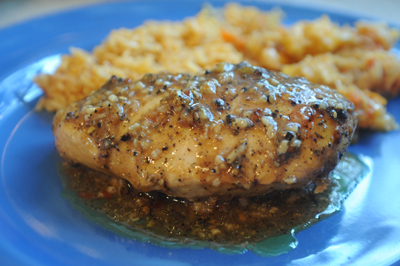 |
| This is the sans-onion version of this recipe. |
Heat the oil in a large pot and fry the fish until golden on both sides. Remove the fish and set aside.
 |
Now add the water and bring to a boil, then add the cabbage, carrots, bay leaf and salt and pepper. Reduce heat, cover and let simmer for 20 minutes.
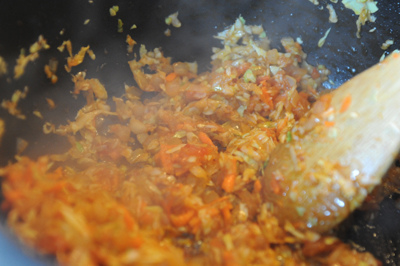 |
Meanwhile, break the fish into pieces and mix in with the vegetables. Heat over a medium flame until hot. Serve alongside the rice.
 |
It was salty. Super, super salty. Which I kind of expected, because chicken bouillon is pretty salty all by itself, plus there was extra salt in the marinade in addition to all that bouillon. So if I made it again, I would probably leave out the extra salt and maybe even a bouillon cube or two.
Other than that, I thought it was really tasty. It reminded me of Jamaican jerk chicken, only without the heat. Martin actually didn't think it was too salty, but he tends to be less sensitive to such things than me. My kids certainly didn't think it was too salty, but we're talking about people who will actually pour salt into their mouths right out of the shaker. So evidently, nothing is too salty for them.
I liked the Jollof rice a lot, though it wasn't nearly as flavorful as the chicken. Of course that also meant that it nicely balanced the chicken, so it was a welcome side dish.
Overall, this was nice though I would certainly make a few changes. I might actually try one of those other versions of Yassa Chicken, just to have something to compare it to.
Next week: Gascony and The Basque Country, France
For printable versions of this week's recipes:











0 comments:
Post a Comment